Chinese Voice Overs
Looking for a Chinese voice over talent or a Chinese accent for your project? Use the samples below to get a range of our vocal talent. We also offer Chinese translation, localization, casting, dubbing, narration and subtitling services. CONTACT US TO LEARN MORE!Our Chinese Voice Over For Expedia
Expedia approached us for assistance with Chinese voice overs for their corporate video. They required a Mandarin Simplified Chinese narration, and the Chinese voice over talent had to speak with warmth and energy.
By working closely with Expedia and paying close attention to their requirements, we completed the voice over in Chinese, ensuring that every word was pronounced accurately and every emotion was conveyed authentically. Our commitment to excellence and client satisfaction was reflected in the final result—a successful video that effectively conveyed Expedia’s message to their Mandarin-speaking audience.
Our Chinese Voice Talents
As an international voice over agency, our goal is to provide you with professional Chinese voice actors who bring richness, sentiment, and genuineness to your projects. By combining their outstanding vocal abilities with our unwavering dedication to accuracy and client contentment, we’re certain that our Chinese dubbing services will surpass your expectations.
Our team can help you choose Chinese voice talents, taking into account their proficiency, adaptability, and aptitude for capturing the intricacies of your script. Whether you need a female or male voice actor, a distinct Chinese accent, or a specific mood, we have a wide-ranging lineup of voice talents who can meet your needs.
CONTACT US for free access to our full library of voice samples.
Unsure whether to use Simplified or Traditional Chinese for your project?
FAQs About Our Chinese Voice Overs
What language is CHS?
CHS, which stands for Simplified Chinese, is a writing system that is widely used in China and other Chinese-speaking regions. It is characterized by simplified characters, which are a simplified form of traditional Chinese characters. The simplification process was implemented in the mid-20th century to improve literacy rates and make the written language more accessible. Simplified Chinese is now the official writing system in mainland China and is also used in Singapore and Malaysia. It differs from Traditional Chinese (CHT), which is primarily used in Hong Kong, Macau, and Taiwan.
What is the difference between Chinese and Mandarin Chinese?
Chinese and Mandarin Chinese are often used interchangeably, but there is a subtle difference between the two.
Chinese, also known as the Chinese language, refers to a group of related languages spoken by various ethnic groups in China. It is a macro language family that encompasses several regional varieties, including Mandarin, Cantonese, Wu, Hakka, and many others. These regional varieties of Chinese differ in pronunciation, vocabulary, and grammar, to varying degrees.
Mandarin Chinese, on the other hand, is the most widely spoken variety of the Chinese language. It is the official language of China and Taiwan and one of the six official languages of the United Nations. Mandarin is primarily based on the Beijing dialect and is spoken by the majority of the Chinese population.
The term “Mandarin” originally referred to the officials in the imperial court of China, who were required to speak the standard language. Over time, the term began to be used to describe the standard variety of Chinese. Mandarin Chinese is characterized by its use of four tones, which play a crucial role in distinguishing words with different meanings.
To summarize, Chinese refers to the broader language family that includes various regional varieties, while Mandarin Chinese specifically refers to the standardized form of the language primarily spoken in mainland China and Taiwan.
How many tones does Chinese have?
Chinese is a tonal language, meaning that the pitch contour or tone of a syllable can change its meaning. The number of tones in Chinese varies depending on the specific variety or dialect. However, Mandarin Chinese, which is the most widely spoken variety, is known for having four main tones.
The four tones in Mandarin Chinese are:
- First tone (ā): This tone is high and level. It is pronounced with a high, sustained pitch.
- Second tone (á): This tone is rising. It starts from a mid-level pitch and rises to a higher pitch.
- Third tone (ǎ): This tone is low and falling-rising. It starts at a mid-level pitch, falls to a lower pitch, and then rises again.
- Fourth tone (à): This tone is falling. It starts from a high pitch and falls sharply to a lower pitch.
In addition to these four tones, Mandarin Chinese also has a neutral tone, which is sometimes considered as the fifth tone. The neutral tone is essentially a toneless or weakly pronounced syllable without a specific pitch contour.
It’s important to note that tones play a crucial role in distinguishing words in Mandarin Chinese. The same syllable with different tones can have different meanings, so mastering the correct tone is essential for proper understanding and communication in the language.
Can you understand Cantonese if you speak Mandarin?
If you speak Mandarin, you may be able to understand some aspects of Cantonese, but full comprehension may be challenging. Cantonese and Mandarin are two distinct dialects of the Chinese language, and while they share some similarities, they also have significant differences.
Here are some key differences between Cantonese and Mandarin:
Pronunciation: Cantonese and Mandarin have different pronunciation systems. Cantonese has a more complex sound inventory with additional consonants and final sounds compared to Mandarin. The pronunciation of certain words and characters can vary significantly between the two dialects.
Tones: Cantonese has six to nine tones, depending on the specific dialect, whereas Mandarin has four tones. The different tonal patterns in Cantonese make it challenging for Mandarin speakers to accurately interpret the intended meaning of words.
Vocabulary: Cantonese and Mandarin have divergent vocabulary due to historical and regional factors. While there are some shared words, there are also many words that are unique to each dialect. This can create difficulties in understanding unfamiliar vocabulary.
Grammar and Syntax: Cantonese and Mandarin have differences in grammar and sentence structure. Although they share a similar underlying grammatical framework, certain aspects, such as verb usage, word order, and the use of classifiers, may vary between the two dialects.
Despite these differences, speakers of Mandarin may still be able to grasp some general ideas and recognize some common vocabulary when listening to Cantonese. The level of comprehension will depend on exposure, familiarity, and language proficiency.
What's the difference between Traditional vs Simplified Chinese?
Simplified Chinese was developed in the mid-20th century in mainland China to increase literacy rates and simplify the characters. Traditional Chinese, on the other hand, uses more complex characters that have evolved over centuries and is primarily used in regions like Taiwan, Hong Kong, and Macau. Read more about Traditional vs Simplified Chinese here.
How much do Chinese voice overs cost?
The cost of Chinese voice overs can vary depending on several factors, including the length of the script, the complexity of the project, and the intended usage of the voice over. Simply contact us and we’ll be happy to provide you with detailed pricing information based on the specific requirements of your project.
What if I need revisions to my Chinese voice over recording?
We’re committed to delivering professional voice over recordings that meet your exact specifications. Should you require any modifications, kindly inform us, and we will gladly implement the necessary adjustments. Please be aware that certain revisions may involve a fee, and we will inform you of this in advance.
Does your media production company work with Chinese subtitles as well?
Yes, we offer professional Chinese subtitling services for a variety of projects, including films, TV shows, documentaries, corporate videos, and e-learning courses.

Chinese Voice Artist Spotlight
ZHENYU TAN, Chinese Voice Overs
Zhenyu, an accomplished Chinese voice over artist, has collaborated with renowned industry giants such as IBM, Microsoft, Google, Disney, Gucci, BMW, Walmart, MTV, and many others. Read more about Zhenyu on our Voice Talent page.
The Chinese Language
The Chinese language, with its rich history spanning thousands of years, is one of the oldest and most fascinating languages in the world. It is the official language of China, Taiwan, and Singapore, and it boasts an enormous number of native speakers, making it the most widely spoken language globally. Chinese is a tonal language, characterized by its distinctive intonation patterns, which give different meanings to words with the same pronunciation. The written form of Chinese is logographic, utilizing characters that represent words or concepts rather than individual sounds. This intricate writing system adds to the allure and complexity of the language. With its profound cultural significance and increasing global influence, learning Chinese opens up a world of opportunities for communication, understanding, and appreciation of Chinese culture.

Ready To Get Started On Your Chinese Voice Overs?
At Metro Audio and Video, our commitment is to deliver professional Chinese voice overs that go above and beyond your expectations. Our voice over company consists of seasoned Chinese voice over artists, translators, engineers, and project managers who collaborate seamlessly to guarantee that your project is delivered with the utmost level of quality, precision, and professionalism.
We recognize that each voice over project is unique, and we take the time to fully understand your specific requirements and preferences. Get in touch with us today to learn more and get started!
We Offer Chinese Translation Services and More!
If your business or organization seeks to extend its presence in China, our all-inclusive language solutions are specifically designed to cater to your requirements. Our team of skilled professionals excels in providing exceptional and culturally sensitive services such as Chinese translation, localization, voice over, dubbing, narrator voices, and subtitling. We tailor our offerings to meet the unique needs of every client, ensuring superior quality and seamless integration.
Explore our featured voice talents.
Click on the languages below to scroll through our large database of voice over specialists and to hear samples of their work.
Stay In Touch










